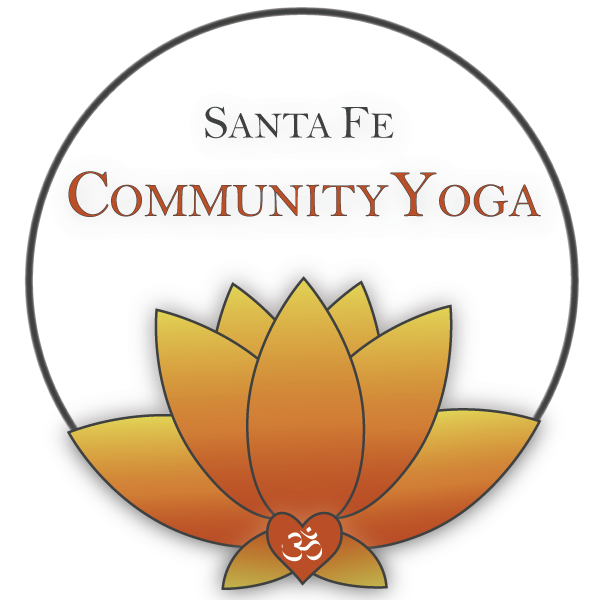Blog post by Viktoria Shushan and Eliza Skye
“To liberate the potential of your mind, body and soul, you must first expand your imagination. You see, things are always created twice: first in the workshop of the mind and then, and only then, in reality. I call this process ‘blueprinting’ because anything you create in your outer world began as a simple blueprint in your inner world.”
The theme of the month at the studio is Sankalpa. Sankalpa is a solemn vow or determination that comes from within. It is a strong intention, desire, volition or will. When we talk about Sankalpa, it is not a simple resolution that is forgotten in a matter of weeks. It literally means a one-pointed resolve to do or achieve. It is beyond ordinary ideas because it drives all action toward one goal. It is the beginning of change in the brain's pathways, which start leading one toward the focus and the habits necessary for achieving an intention. Sankalpa precedes all actions - it lives in the mind and in the heart.
POSE OF THE MONTH: BALASANA (CHILD'S POSE)
Balasana, or Child's Pose, is a favorite to many, especially when taken as a counter pose to repeated vinyasas or headstand. To come into Child's Pose, the toes should be together with knees bent. Knees can be touching or spread wide apart. The forehead should rest on the mat or a prop. Close the eyes and focus on the breathing, eventually coming into thin, steady inhales and long, full exhales. In Child's Pose, you are always able to revisit your intention as well as return to a quiet and mindful state. In addition to many internal benefits, Child's Pose works on opening the hips, ankles and thighs, relieves tension in the back, shoulders, chest and neck, stretches the muscles, tendons and ligaments in the knee, and normalizes circulation through the body.
MUDRA OF THE MONTH: YOGA MUDRA (YOGIC SEAL)
This mudra has a few different variations depending on your comfort preference. In our yoga classes at Santa Fe Community Yoga, you'll have a chance to experience other types and suggestions of this seal.
Variation 1: Hands behind back
Start in Balasana, clasp your hands behind your back (one hand clasps the opposite wrist). Optionally, rest your forehead on the floor or a block. Because this position is supine, take extra care if you are experiencing a vertigo or a migraine, if you had an eye surgery or dental work. Focus on letting go on exhalations. Let your mouth and lower jaw relax. Feel the gravity pull away stress and tension.
Variation 2: Seated hands in front of the stomach
Start in a comfortable seated pose. Place your hands on your lap, clasping your right wrist with your left hand. Relax the hold and let your facial, neck and shoulder muscles relax. Let your breath be the guide and notice your pulse slowing and your mind calming down.
BENEFITS
- Bring energy to the whole body
- Massage of the internal organs
- Builds flexibility of hips and lower body joints
- Releases pressure from spinal nerves
- Improves organ performance in the abdominal and pelvic region (because of the restriction of the blood flow in the legs)
- Builds concentration and communication between all cells in the body
- mproves nervous system and calms the mind
CAUTIONS & COUNTER INDICATIONS
- Taking a badakonasana or any other hip opening asana will help prepare your body for a relaxed and effortless experience. Avoid this pose if you have uncontrolled blood pressure, sciatica and any structural issues
- If you start feeling discomfort of any kind please come out of the pose
- Try not too come out of this pose too fast (do it on inhalation)
- assage your knees and do a supported paschimottanasana before standing up.
VISUAL FOCUS: DRISHTI
This year we are following a journey of the flower of life creation. Flower of life is a sacred geometry pattern which consists of overlapping circles. One of many meanings of this pattern is that it visually represents the interconnectedness of all things in the universe. It suggests that, although we might feel separate, we are part of a greater network and we are always connected to each other. There is one life force (or Prana) that runs through everything and that's what binds us together.
In January we are starting with a Drishti (or dristi) point inside the first circle. Drishti is a focal point for concentration used in meditation or yoga asana. When we practice drishti we work on strengthening the power of intention. According to 8 limbs of yoga (described in Yoga Sutras), two of its limbs (Fifth Pratyahara & Sixth Daharana) use drishti as a tool for withdrawal of senses and building concentration. One of the most commonly used drishti points is the third eye.






